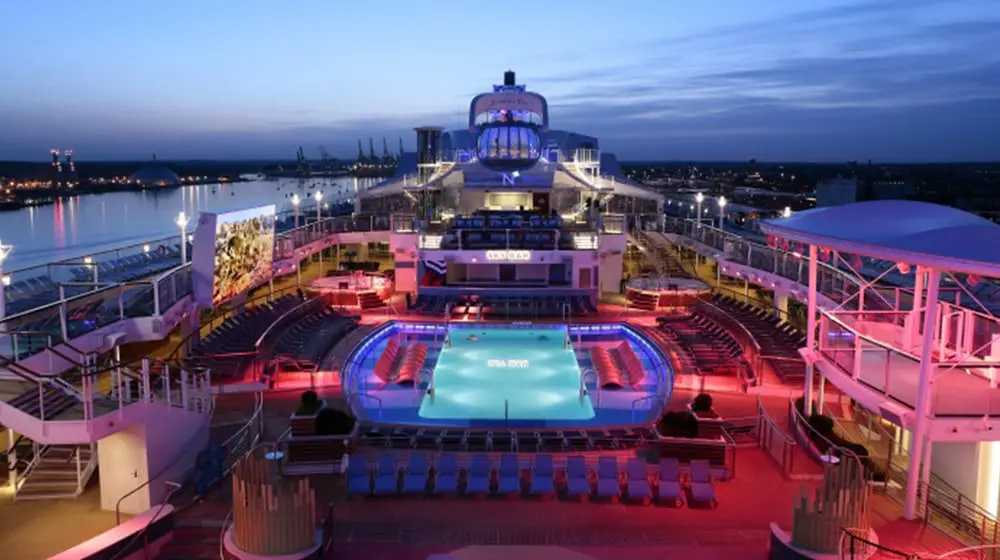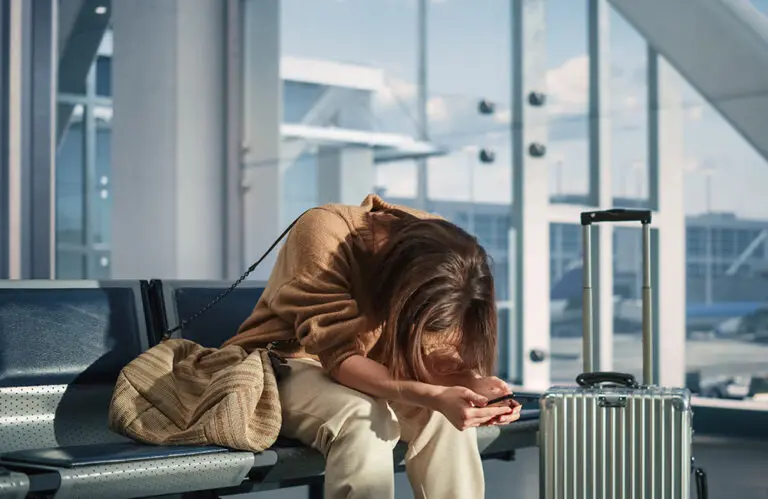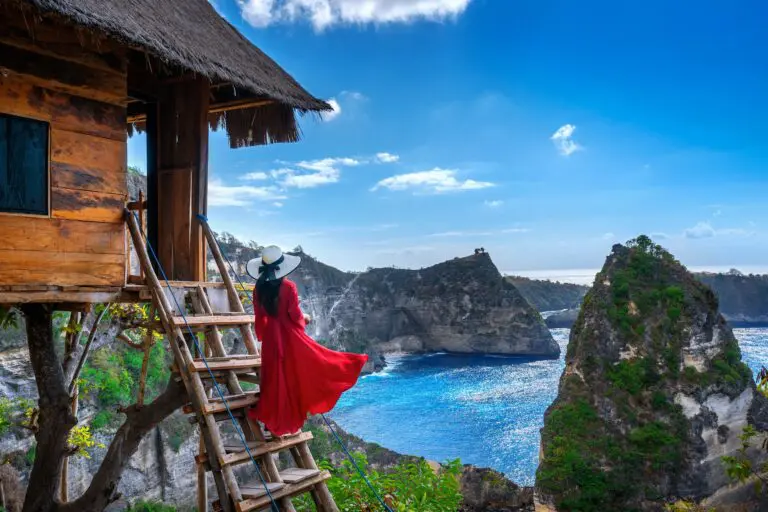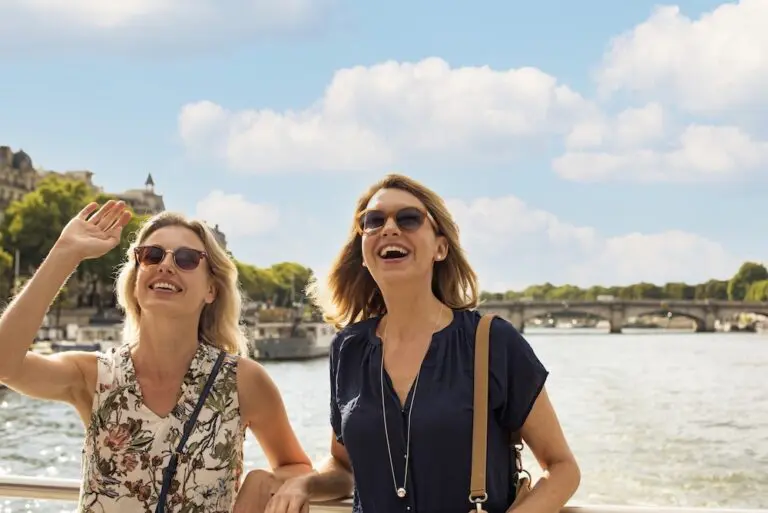It’s easy to be swayed by mass media into believing that big ship cruise operators like Royal Caribbean are damaging our sea life & destroying destinations with bad practices.
But it’s simply not true.
In a Q&A with KARRYON at Cruise360 earlier this year, Royal Caribbean Cruises’ Vice President & Managing Director Australia & New Zealand, Susan Bonner, said that protecting the environment for current and future generations is a number one priority for all cruise companies.
She explained that they’re all doing their part to ensure they minimise their footprints in and out of the ocean through new onboard sustainable technologies, charitable partnerships and community care.

“The reality is that we as an industry have to behave in a socially and sustainable way because there’s too much at stake.”
Susan Bonner, Royal Caribbean Cruises Vice President & Managing Director Australia & New Zealand
“If people spent the time to look at all the great efforts we bring on board, and all the new technology, they’d realise how much we’re doing.”
Read on for more of KARRYON’s chat with Susan:
You’ve previously mentioned the importance of cruise lines working together to be more sustainable – why is this so?

Image: Brandon Nelson/Unsplash
We’re all in this together.
We operate under Cruise Lines International Association (CLIA) to make sure we’re meeting the regulatory requirements that the International Maritime Organisation has established. We all have to adhere to it, but we all also benefit from moving in that direction and make sure we’re sharing sustainability best practises because this isn’t something where we compete on.
Sustainability isn’t table stakes for us as an entire industry, and it’s not just about one of us, so we can only benefit when we’re working together and making sure that we’re good stewards of the environment.
What’s the worst case scenario if cruise lines don’t work together?

Image: Allen Taylor/Unsplash
I don’t even have that as an option. Failure isn’t an option with cruising and sustainability.
We have established goals, we have established time frames to achieve those goals, and we have set aside capital to meet these goals.
Can you tell me a bit about Royal Caribbean’s history with sustainability?

We started Save the Waves in 1992, so this is not a new topic for us.
We started the Ocean Fund to focus on maritime research in 1996.
Even more recently in 2016, we announced our partnership with the World Wildlife Fund (WWF) that is about protecting the environment in which the wildlife lives. We have made a commitment around greenhouse gas emissions associated with that.
We have made specific commitments around time and measurements to say how we’re going to be procuring food that we serve on board to make sure we’re not overfishing. We have certain benchmarks in place, and we are contributing and funding to WWF to make sure that they get access to capabilities that we can’t do ourselves.
Big ships don’t have the best reputation for sustainable travel, how can Agents convince their clients otherwise?

Let’s start by looking at our recycling efforts, whether its water recycling or hard waste recycling. If there are 5,000 people on Ovation of the Seas and you put them into their own community, they’re causing much more damage than they do on the ship. We have 100% recycling requirements onboard for everything.
We have an Environmental Officer on every single one of our cruise ships around the world which is dedicated to making sure we follow standard quality management procedures. This person reports to the Chairman of our organisation. This role is taken incredibly seriously.
We bring onboard new technology such as the micro-bubbles. The micro-bubbles run along the base of our hull so that we can reduce friction and reduce fuel consumption. It’s like the weird & wonderful – we don’t just have it on top of the ship, we have it all around the ship.
Sustainability in cruising is an executive commitment at the highest level. It’s committed by CLIA as an industry body, and it’s Cindy D’aoust’s mantra because we’re in this for the long haul.
Plus we’re all individuals. Industry aside, brand aside, we as individuals are human beings that need to look after future human beings – that’s our number one job. The way we do that is through our brands and the industry. This isn’t just about cruising, this is about everybody looking at how they can contribute to sustainability in the world.
Can you tell me a bit about the community-based work Royal Caribbean takes part in?
There are a couple of different ways we support communities, and I could talk about this forever, but I just want to talk about Royal Caribbean for a second because not everybody realises what happened during those hurricanes in the Caribbean last year.
We had a community that was previously hit by a category five, which is the strongest category for a hurricane, and it was a community that within that generation had experience petrifying circumstances that wiped out regions within South Florida, seriously wiped them out and the tree growth still hasn’t recovered in these areas.
Our company brought in trucks of ice, and they brought in trucks of water. After the storm had passed they opened up the day care for anybody, they opened up our cafeterias until everyone got the food they needed.
Fortunately, we weren’t hit as hard, but we did lose power for three weeks, but if you think about the island communities we serve and all the work there, and what we did when we arrived in San Juan. Honestly, we sent people over there with cash, and we distributed that money among community leaders we have business relations with for further distribution within the community and I can guarantee that with 100 percent certainty because it was one of my personal friends that went to do it.
The supplies that we brought to Puerto Rico. We did everything in our power to assist – we collected clothing, we collected towels, you name it, and we were shipping them out.
I’m not going to take credit for solving the problem, but we recognise that we are an interconnected community of human beings and humans coming first is the number one value we have in this region.
What I’d like to do is make sure that all the hearts and minds are also attached to the community issues that are relevant here in Australia, New Zealand and the South Pacific. It’s one planet and we all have to share it.
- READ: RCL orders 3 new ships for the Silversea fleet
- READ: Cruise line is spending $1.1 billion to attract first-timers
- READ: Mass-market cruising’s next cruise ship will have a bungee






